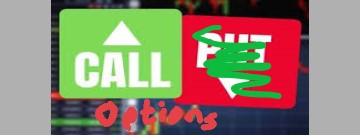
A call option is an option contract in which the holder or buyer has the right, but not the obligation, to purchase a specified quantity of a security at a specified price within a fixed period of time, that is, until the expiration of the option. The price at which the stock can be purchased is known as the strike price. No new stock is created in the transaction thus differentiating call options from warrants. There are also similar characteristics to Contingent Value Rights (CVR‘s) used in mergers & acquisitions. The seller of a call option, also known as the writer, has the obligation to sell the underlying security at the strike price if the option is exercised. The call option writer is receives the cost of the option, or premium, for taking on the risk associated with the obligation.
Options can be traded on a range of underlying instruments such as indices, commodities, FOREX and equities (including ADR’s). In the U.S., the option contract most often refers to 100 shares.
Note how the mechanics of this instrument are the exact opposite of a put option. In this case, the holder of the call option may buy the stock, whereas the holder of a put option has the right to sell the stock. This leads to put-call parity where the purchase of a call combined with the shorting of a put on the same strike with the same expiration is EQUAL to a long stock position.
Call Option Example
There are many strategies available to traders when using options in trading merger arbitrage or as part of a wider investment strategy. We discuss these strategies in our article How to use Options in a Merger Arbitrage Strategy. The following example is taken from that article.
Short Call
In a cash only deal where the arbitrageur is already long target stock they may wish to enhance returns by selling an OTM call options. The risk lies with selling an option only to see the stock finish above the strike price, the profits from which, would not accrue to the trader.
Trader must account for the movement in the underlying market during the time of the offer. The original tender off for NXPI was $110.00 per share but as the market (especially the semi-conductor index) had risen so strongly, thus raising the floor price, QCOM had to raise its bid to $127.50. Traders reasoned if a higher bid did not materialize the stock would be worth at least $110.00 anyway and so refused to tender their stock in the tender offer. Subsequently, the acquirer was never even close to achieving the minimum tender condition. Therefore, the call options had significant value. Subsequently, near dated options should be preferred as to help avoid the extended run up in stock prices as seen in NXPI. This aside, a call option with a sufficient decay value may be indicative of the likelihood of a higher bid. Alternatively, lower priced call options may not be deemed sufficient for sale due to their low value despite indicating the low probability of higher offers emerging.
Additional Traded Options Resources
- Often considered obligatory reading for options market-makers is Option Volatility and Pricing: Advanced Trading Strategies and Techniques, 2nd Edition by Sheldon Natenberg
- For more on the topic of volatility, see Kevin Connolly’s book Buying and Selling Volatility
